Oil painting techniques
Oil painting techniques
Painting and music are the two oldest arts of mankind. It is not known whether music or painting preceded it, but as soon as people were still eating feathers in holes, they painted images in caves, whatever the purpose. Today, many other disciplines, especially visual arts, such as photography and cinema, still do not make painting disappear.
Even in terms of painting and only from a technical perspective, it is also divided into many branches: Watercolor, Watercolor, Lacquer, Woodblock, Water Paint (Acrylic), Oil Paint (Oil colour), Chalk Fairy (Pastel)... Here we only pay attention to the basic points of oil painting technique. Of course, to draw, we need materials and tools and then how to draw.
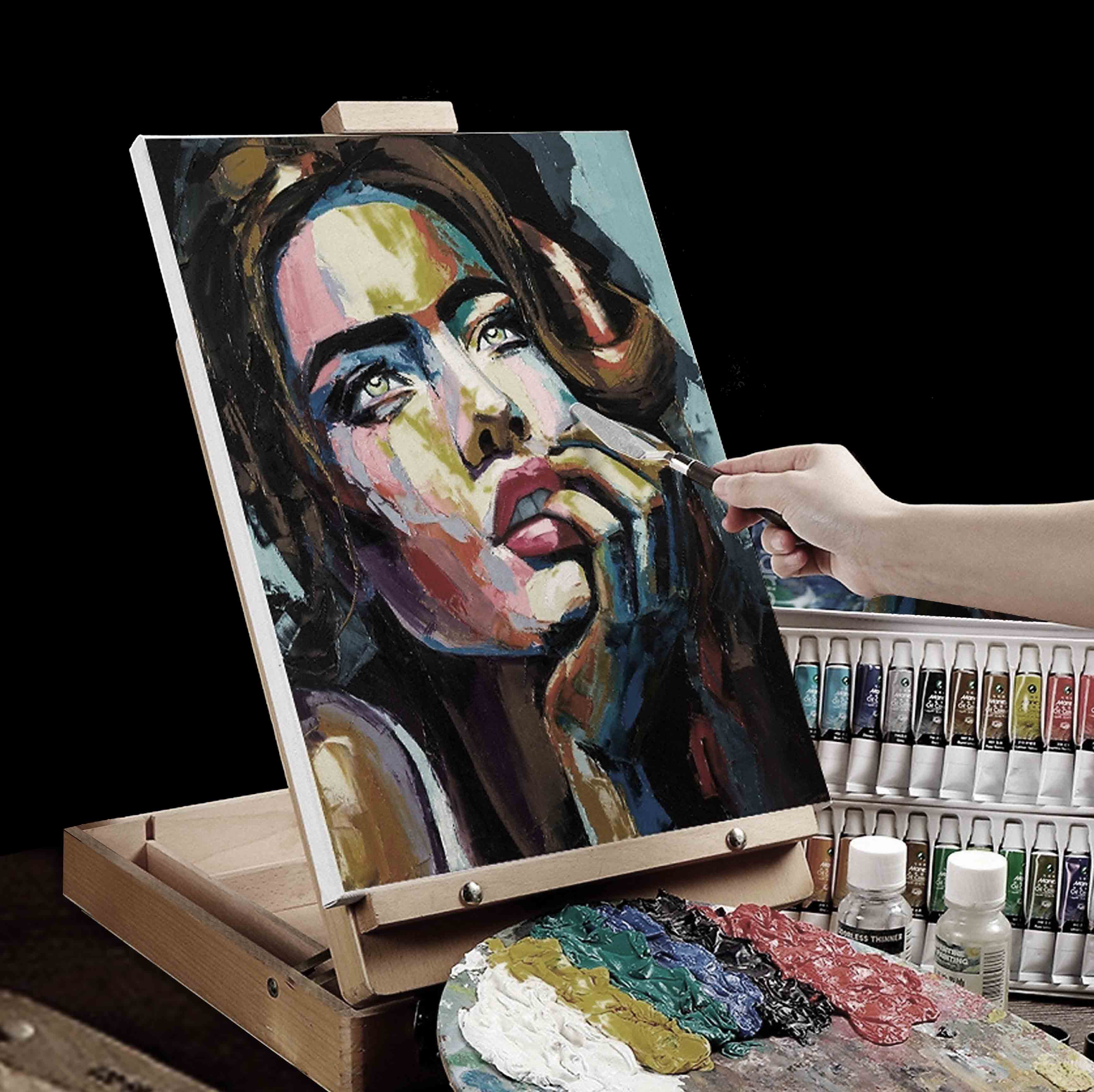
1. WATCHING MATERIALS
- Drawing face:
Oil paint can be painted on almost any material such as canvas, wood, paper, plastic, as long as the material does not contain a higher fat content than the oil contained in the paint used for painting. However, when choosing a support to draw, it should be noted that supports can deform over time. Although the oil paint is quite strong and has some elasticity after it dries, if the support surface is deformed a lot, it will damage the paint layer above. The less deformation the support has, the higher the maintenance value. It's sad that a beautiful painting that has only been a few decades old has rotted, faded, peeled, cracked, and shrunk. Good wood, canvas glued on cardboard, plywood for drawing are good supports. However, the most popular support is still the canvas stretched on the frame because:
+ Breathable so that the paint evaporates, "breathes easily", dries naturally.
+ Relatively resistant to harsh weather (less prone to warping, bending, cracking ..) but not like other types of supports
+ Shit. The problem seems insignificant, but if the painting is about a few square meters large, it is very difficult to draw on plywood weighing several tens of kilograms when it needs to be moved and hung up. Bring about 20 such paintings to the exhibition, carry ... take your breath away. The larger the area, the higher the weight ratio of laminate, laminated paper, plastic compared to canvas stretched on the frame. A small picture the size of a monitor's face, drawn on any support, weighs almost the same. But a mat-sized painting painted on plywood can weigh ten times more than a canvas-sized painting strewn on a wooden frame. .
Canvas from the 15th century has gradually replaced wooden boards, and has become popular in oil and water painting techniques (Acrylic) because of the above advantages.
- Anti-oil paint:
Please do not mix anti-oil paint with primer first. We will talk more about this when we talk about how to draw. All supports made of natural materials such as wood, organic fibers ... need to be painted with anti-oil before oil painting. Oil-resistant paint is of course a water-based paint with a glue that covers the drawing surface. A common oil-resistant paint is called Gesso. Must be painted at least three layers to be safe. Oil-resistant paint has two uses.:
+ Do not let the oil seep into the organic fibers, because soon, the oil will rot.
+ Fill the tiny holes of the support and so that the oil and other paint additives will not be absorbed too much, reducing the use and properties of the paint.
The canvas has been stretched over the frame and has been painted with oil resistant paint and is available at art supply stores for artists. Canvass for sale in all sizes.
- Brush and fly:
Brush is the main tool for drawing. This is because one can paint in oil with any medium: using a trowel, a dent, a towel, a spoon, even with one's own fingers. However, the brush is still considered the most common tool.
Depending on the hardness and softness of the bristles used, the brush marks left on the paint are different. The brush has a high quality that does not shed hair when drawing, does not scratch its head, changes its shape overnight. A good brush will return to its original shape after use and if cared for carefully will be very durable. Buy a good brush. Cheap brushes cause a lot of trouble when cutting and quickly spoil. At first, it is recommended to use a relatively soft brush, because we have a slightly strong brush direction; If you use stiff bristles, the paint will be wiped off. There are many different brands, one of which is quite popular and good, affordable is M. Grumbacher.
Just a set of several brushes is enough to paint any kind of picture. A beginner in oil painting needs only:
+ A relatively flat brush, flat tip, 2” wide for painting relatively large areas, or primer and a flat brush about 3/4” wide.
+ A fibert or Walnut-shaped brush about half an inch and a similar brush about ¼ inch smaller. This type is very popular because of its versatility.
+ A small round brush (like a cursive pen) to draw thin strokes. You can also use the above 1/4" filbert brush to draw small strokes like branches and grass.
How to hold the brush? In fact, there is no definite way to hold a brush. However, it is seen that most painters when they need to sweep long lines, hold the brush handle in the palm of their hand, how to make their arms and beads move freely. When drawing short lines, hold it like a pencil. If it is necessary to draw precise lines, the hand needs a small stick like a ruler on which the hand can rest.
Besides the brush, also need a trowel to mix colors, to scrape paint on the palette (palette). Flying is also the second most popular painting medium after brush, especially effective when painting on wet paint (alla prima). People only use flying from beginning to end to paint a whole picture. Drawing by flying is relatively difficult, but not without trying and practicing. Flying has the advantage that it does not leave traces of hairs like when painting with a brush, cleans quickly, is durable, does not need to use chemicals to wash, so the workplace is less polluted. Because the cleaning is very fast, the color change is very fast, not waiting for a long time, but losing interest.
- Oil painting:
The substance (medium) used to mix the color (pigment) of oil paint is of course oil. Oil paints sold in the market carry many brands. The more pigment dense the paint, the more vibrant the color, and often more expensive
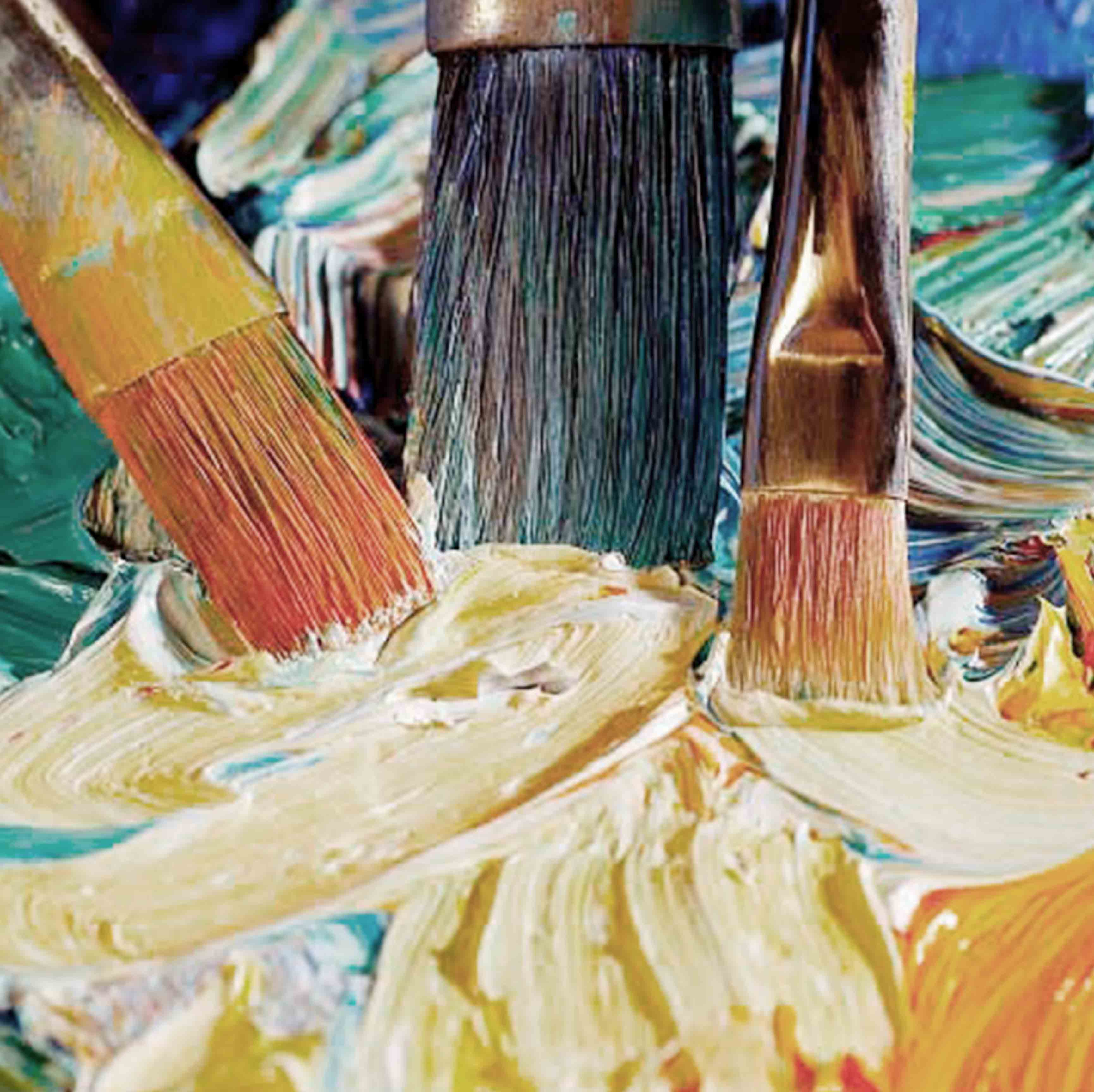
Due to different paint formulations, some colors take longer to dry than others. White and pale yellow take the longest to dry; brown (burnt umber) dries fastest.
There are three primary colors (primary colors) which are colors that the painter cannot mix from other colors. As a rule, when mixed together in different proportions, the primary color will produce an infinite number of secondary colors. The three original colors are: Yellow (Process yellow/Pale yellow), Thien Thanh (Cyan/Blue), Pomegranate red (Process red/Magenta). These three colors are very pure - this color does not overpower the other two. All other colors can be mixed from these three colors. In printing and color grading techniques (for example, on computers), it is abbreviated as: YMCK (Yellow - Magenta - Cyan and Black), in fact in the printing industry people often use black because of the accuracy of the machine. In printing, sometimes mixing the three primary colors does not achieve the desired black color. Let's talk off topic: Psychological researchers find that children are very fond of primitive colors or colors close to primitive colors.
The color that has been prepared and sold in the market is sometimes slightly liquid, sometimes a bit thick for one person. Sometimes it dries too slowly, or it dries too quickly. Therefore, in addition to color, it is also necessary to have some other substances to make it easier for the painter to use color. As necessary:
+ Paint liquid phase oil: Oil is in one of two groups: volatile type and non-volatile type, which when dry, hardens according to color.
The first group for paint thinner, paint cleaner, brush cleaner, etc. is made from substances taken from herbs or animals and has many different names through people called Thinner or Turpentine.. Odorless, more expensive but do not suffocate the drawing room. The expensive type used to wash the brush for a long time without use will help the brush to be less hard.
The second group is used to blend a little into the color to help the brush glide more smoothly. This group is non-volatile, slowly dries and hardens with color. The most common in this group is Linseed Oil.
Except in necessary cases, in addition, do not use too much paint thinner because when dry, dull, loss of brilliance is a characteristic of oil paints.
+ There are some other additives that are not used often but should also be known such as a quick-drying agent, a paint protectant when finished and the paint is really dry (matte varnish/gloss varnish). Using a quick-drying paint can cause the paint to crack easily after it dries. Spray paint only to protect and restore the beauty of the color after the paint has completely dried, usually six months to a year depending on how thick or thin the paint is.
2. TYPES OF OIL PAINTING
- Basic principles:
Although artists have their own way of painting, there is a basic principle that has become fixed: "Fat over lean" (Fat over lean) is a principle. Rules every oil painter must follow when painting to avoid basic mistakes that can ruin a painting when the paint dries.
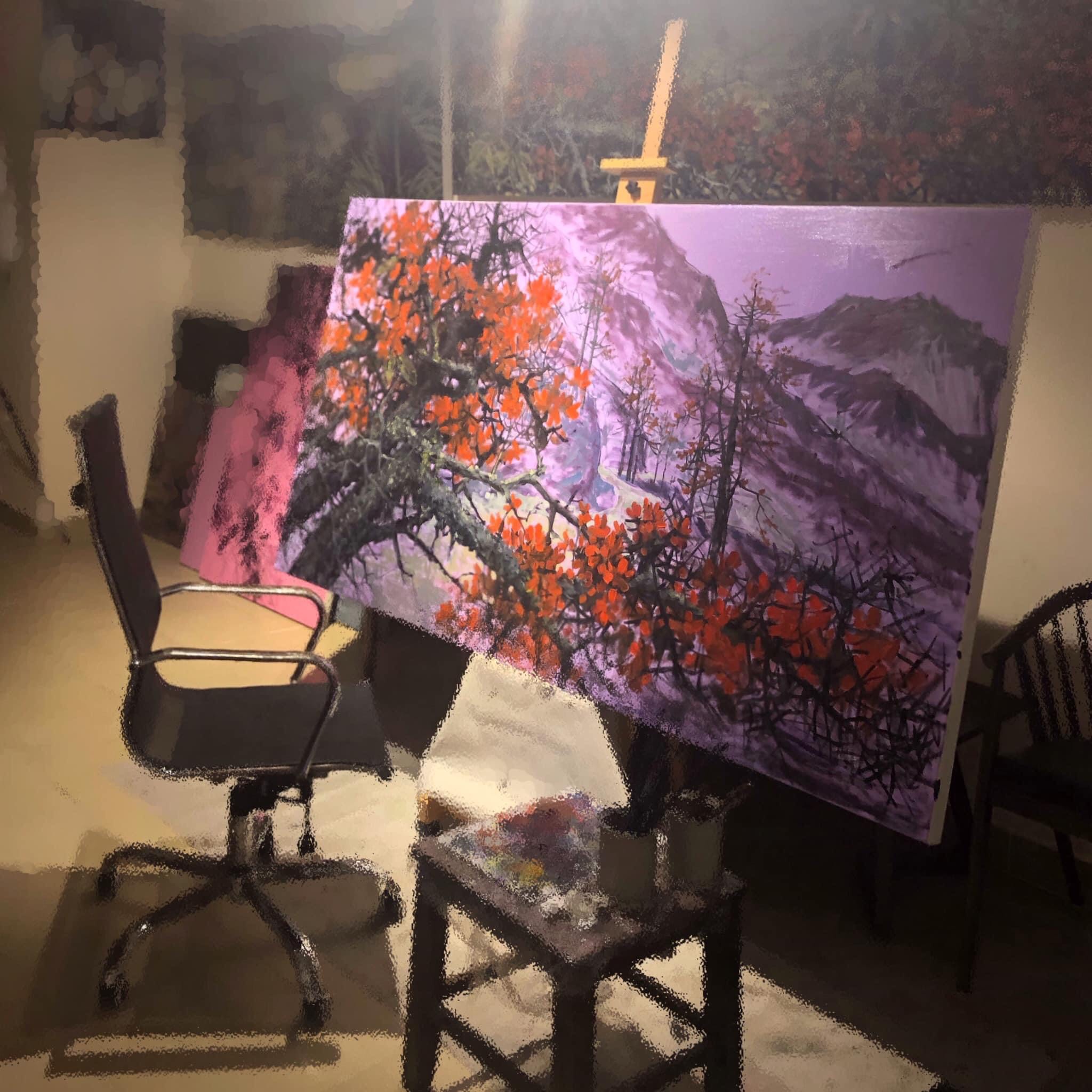
Oil paintings take a long time to dry. It may take six months to a year to completely dry. During this time, the oil that is exposed to the air slowly dries out as it oxidizes and shrinks slightly. If we draw “lean over fat”, it means we are using turpentine to dilute the paint and use it to paint over the oil paint (not completely dry), so the top layer will dry faster because there is less oil. When the bottom layer dries, the painting will peel or crack. Therefore, when painting oil paintings, we always remember the principle of "Fat Over Lean". There are many ways to draw fat over lean:
+ slowly increase the oil level in the paint, when painting.
Reduce the amount of oil (diluted with turpentine) in the first coats when painting.
+ Use paints that dry quickly to paint the background (please refer to the paragraph about oil paint).
- Paint on wet paint:
Long-drying oil paint. Painters want to complete a picture in one painting, forced to paint right on wet paint. The results obtained when drawing on wet paint are far different from those obtained when drawing on dry paint. Because the new paint layer can mix with the paint below and create many intermediate colors. So instead of mixing colors on the tray, we can mix colors right on the canvas when drawing. The trouble is that if a stroke is not satisfactory, it will be very difficult to correct. The more you paint over and over, the more the paint will smudge and eventually become a mud color. Painting on wet paint requires firm brush strokes to keep the paint clean. This technique also requires the artist to have a capital in color grading, to imagine what color a part of the top color will be mixed with the lower color will produce.
This drawing is the offspring of impressionism. Alla prima - Start is done - does not give people the opportunity to go into details. It gives the viewer a visual impression, not just lines and shapes.
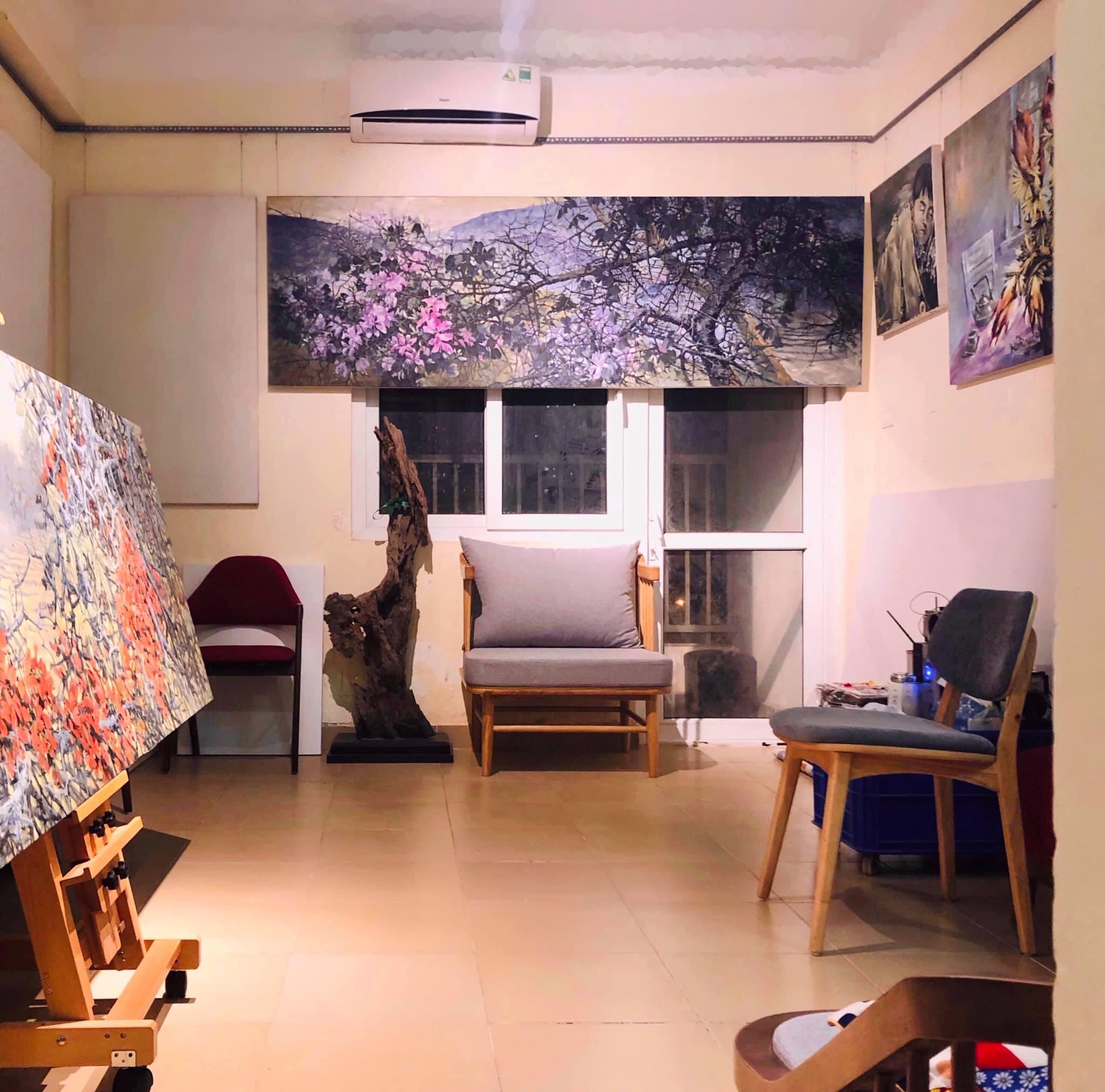
But the beauty of this technique is spectacular. It creates a beautiful sparkle because the third color is created by the blobs that are next to each other, not always mixed together. And that's why the brush line must glide firmly and "courageously".
The culmination of this style of painting is Impasto, using a brush or trowel, applying thick patches of paint over a layer of still wet paint, or one patch on top of another. Impasto can be considered a particular style of painting and uses this technique to paint from beginning to end a picture. It is also possible to apply impasto at a certain time, in a certain part of the picture. Using impasto for painting, it is recommended to use slightly diluted paint to outline the details of the painting first. Doing so will cover all the white of the canvas and the picture will be more uniform.
- Paint on dried paint:
People also call this way of drawing layer by layer. There are many people who do not like to paint directly on the white canvas (primer, please see the top), but apply another layer of paint before painting. This first layer of paint is often called the base paint, understood as the paint that covers the entire canvas. Many people, especially when painting detailed landscapes, use a few simple colors, gray or brown (as long as they dry quickly), paint first and then actually paint. It's primer. Background or lining, just calls to make it easier for us to remember an idea, that's all (Maybe it will become a technical language later on). Do not use white or yellow for primer or base paint, because these are colors that take a long time to dry.
Whether it's base paint or primer, the "paint on dry paint" way, of course, must be allowed to dry before painting. The three main characteristics of this style of drawing are:
+ Because the paint below has dried, it does not mix with the newly painted paint, does not create additional colors that you do not like. That's why we have to mix colors on the tray.
+ The picture can be drawn in more detail, because we can add lines or color layers easily.
+ Waiting for the paint to dry, we have time to think and develop the picture more carefully.
Drawing this way should be patient, do not abuse the quick-drying agent to mix in the paint, because when it dries, the paint may crack or peel off. To help the paint dry quickly, people dilute the color with Turpentine, especially when applying primer. However, do not dilute too much because the paint is dull.
Going farthest in this style of painting is Painting with glazes. From start to finish, the painting is painted with paints diluted with turpentine. Drawing this style is similar to drawing watercolors. This drawing style is old, only used a little with other drawing styles, because it cannot take advantage of the beauty of oil paint and the colors are not durable.
- Painting on an oil-coated background:
Oil is both a concoction and a base coat for painting. This technique is especially suitable for painting foggy scenes. Before painting, apply a thin layer of oil (Linseed Oil) on the canvas surface, especially in areas where it is necessary to create the illusion of fog, or blur like winter scenes in ink paintings. When painting on an oiled area, the color automatically spreads, creating an illusion for the viewer. This technique is similar to watercolor painting. Of course, paintings this way take a long time to dry and hope you are not allergic to the smell of oil.
- Draw small lines next to each other:
This is the drawing most used by the impressionists. Instead of mixing colors from the tray, people mix colors by placing small dots next to each other. As a result, the colors look shimmery. vibrant colors. In general, impressive drawing has its flatness, although details are overlooked.
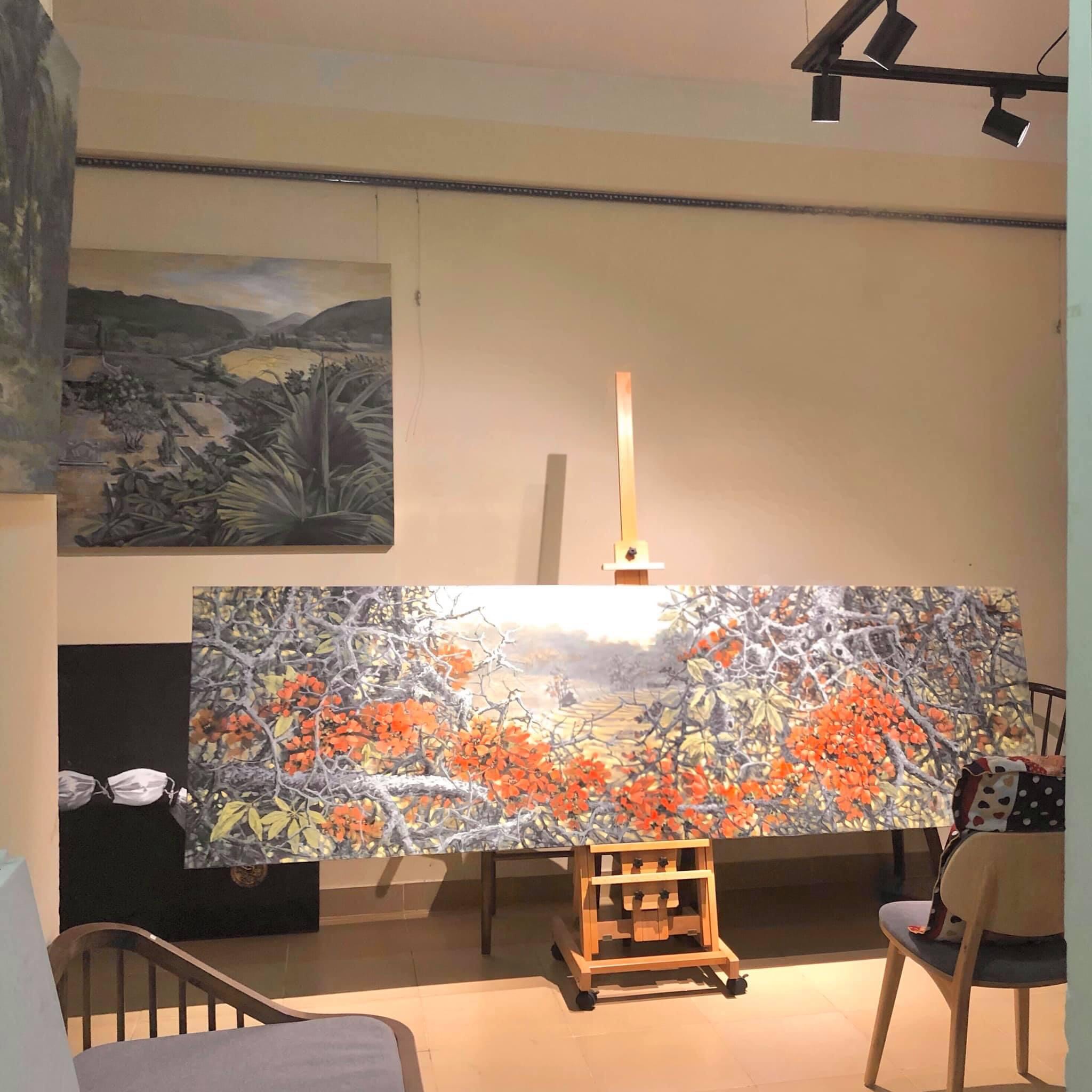
3. GENERAL RULES
- Light:
What is the most important thing to notice and master when drawing a picture? That is light. Light allows us to see the convexity of things. It is the light that allows us to see the depth of the scene. It is the light that helps us distinguish the rough trunk from the calm lake. Before concluding this article, let me recall a few general rules that are mostly related to light.
+ The brightest spot in the shade is not as bright as the darkest point in the light. In other words, the darkest point of the exposed area is still brighter than the brightest point in the shade. Rub! Sounds like a play on words. Don't try to imagine but get tired. Put something out into the morning or afternoon light, and look at it and you'll see it right away.
+ The further away the object is, the fainter it is, and the colder it is. The closer the subject is, the warmer and sharper the color is. Red and yellow are the hottest colors. Blue is the coolest color. When we mix them together we get intermediate colors, either warm or slightly cold. An object near is green, far away will be less green. An object near is red, far away will be less red...
+ Between the light area (Highlight) and the dark area (Shadow) there is always an area of intermediate tone (Halftone). This midtone is important because it usually takes up most of the area of the picture and because it balances the two ends. It is necessary to recognize this tint and sketch it first. This helps to avoid making the picture too bright or too dark. When I finished drawing, I realized this mistake, it was too late.
- Perspective Law:
The horizon line is the main line in the law of perspective. Our vision from far away will stop there. Lines above the horizon when running away will lower and merge with it.
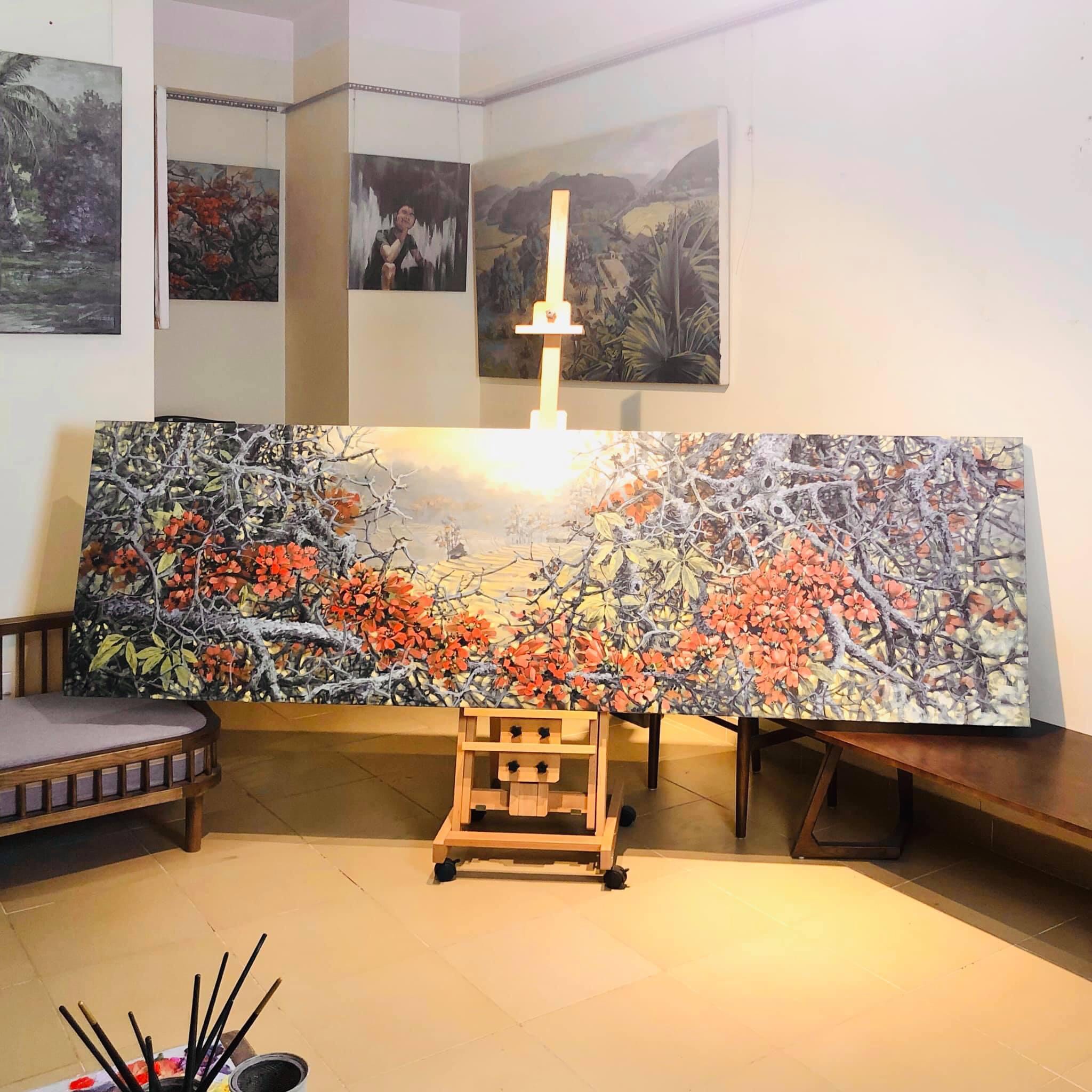
Roads that are below the horizon when running away will rise up and fall into it. Drawing according to the law of perspective will give the picture depth.




